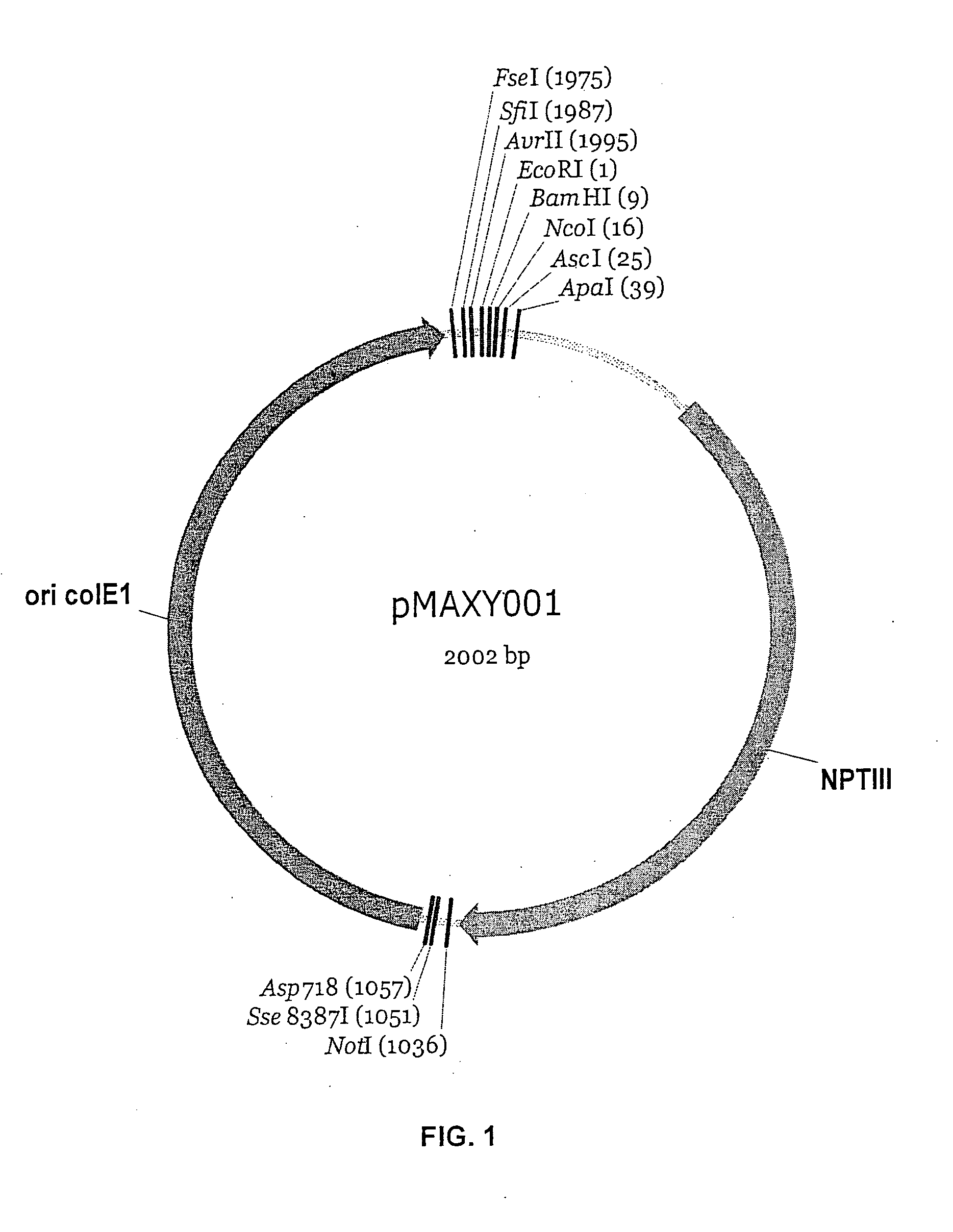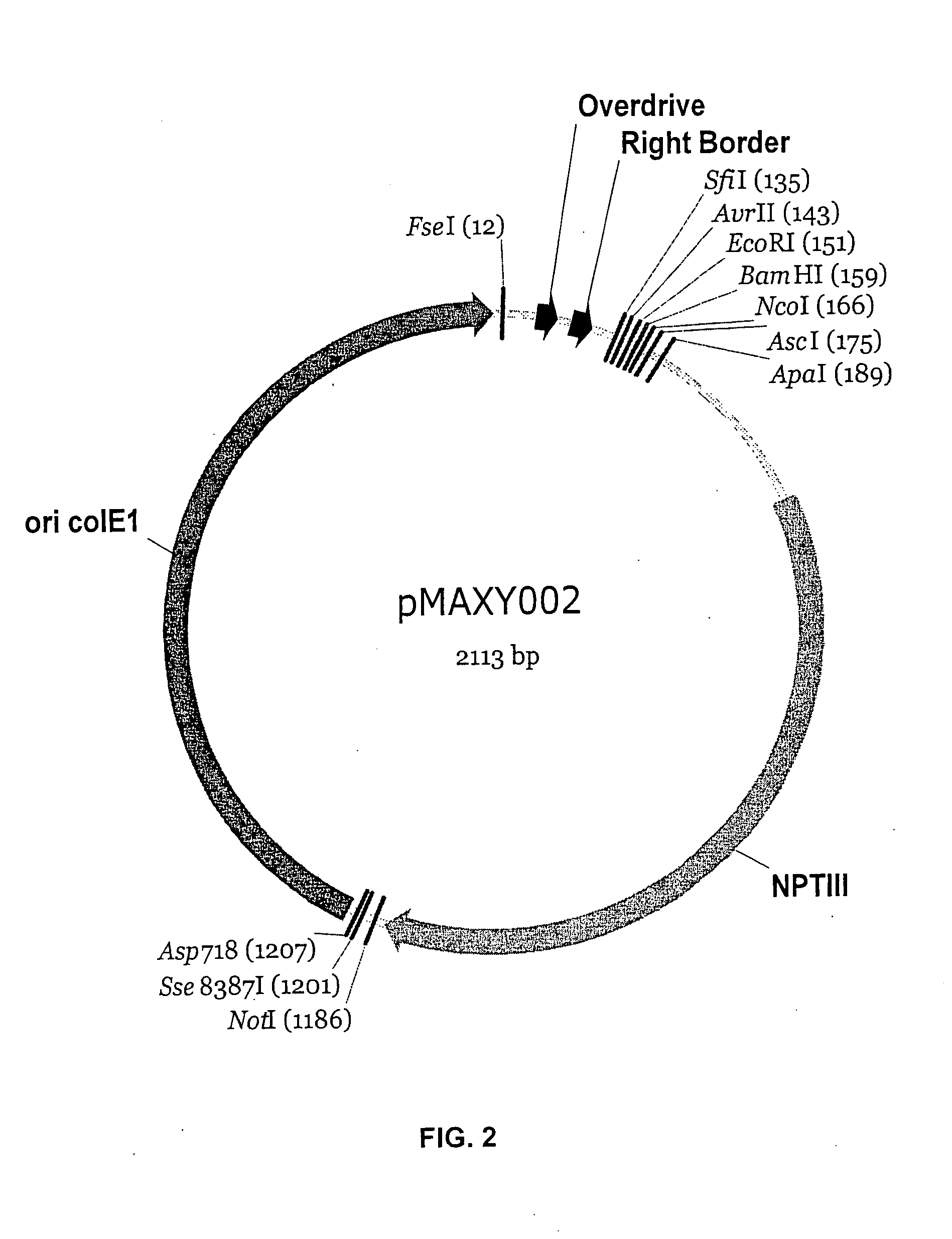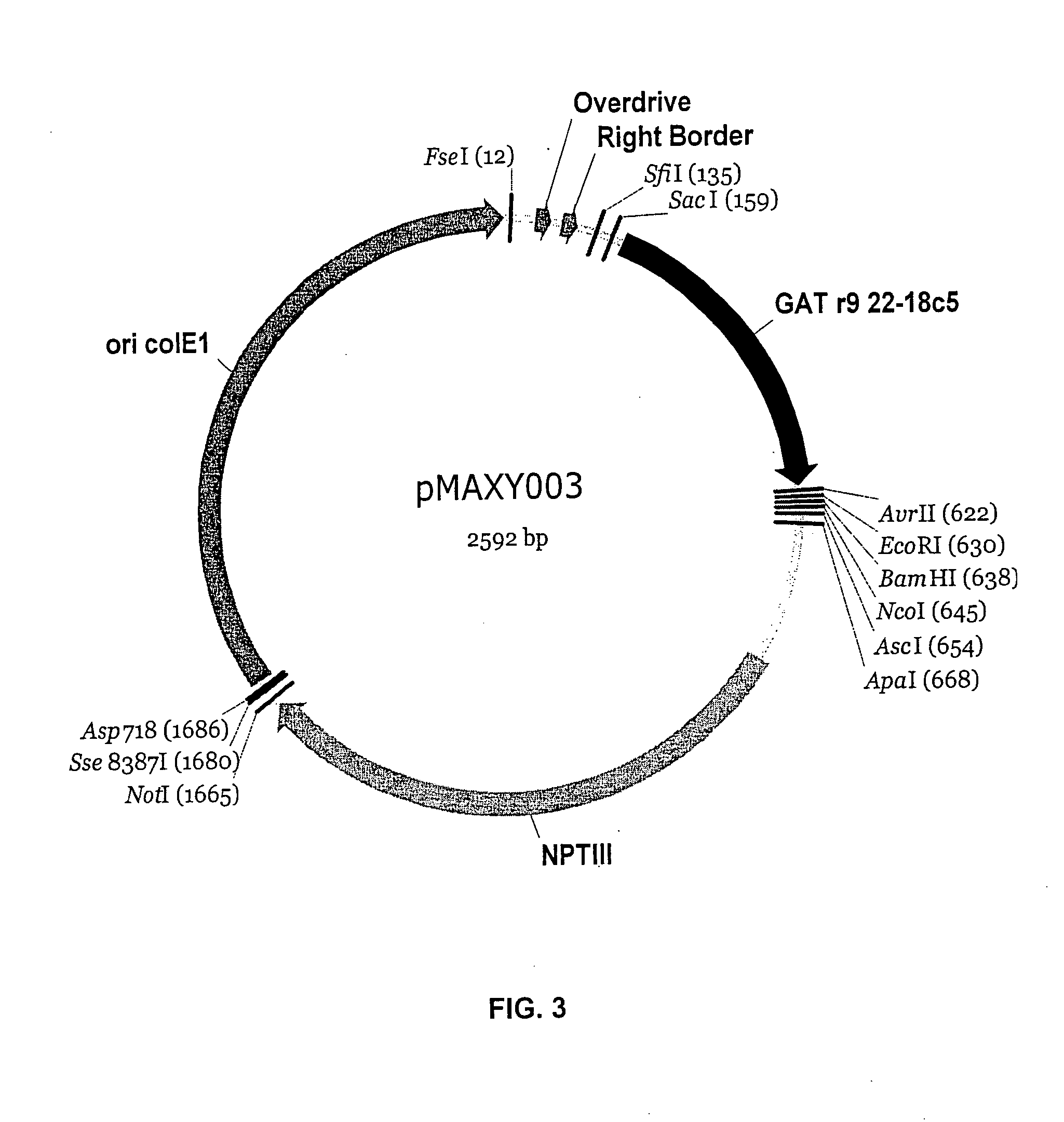Vectors for plant transformation and methods of use
a technology of vectors and plants, applied in the field of plant transformation vectors, can solve the problems of economic undesirable expression of transformed plants, and uncontrollable tumorous growth of bacterially infected cells, and achieve the effect of facilitating the elimination of transformants
- Summary
- Abstract
- Description
- Claims
- Application Information
AI Technical Summary
Benefits of technology
Problems solved by technology
Method used
Image
Examples
example 1
Construction of a Binary Vector Backbone Precursor (pMAXY007) of the Present Invention
[0174] A binary vector precursor was constructed from component elements using the following scheme—Step 1: A ColE1 origin region, which allows plasmid replication and maintenance in E. coli, was PCR-amplified from the vector pBR322 (GenBank #J01749) using primers SEQ ID NO: 5 and SEQ ID NO: 6. These primers introduce Sse8387I and Asp718 sites at the 5′ end of the fragment, and FseI, SfiI, AvrII, EcoRI, and BamHI sites at the 3′ end of the fragment. An NPTIII gene with its associated promoter, which allows antibiotic selection for plasmids in E. coli, was PCR-amplified from the vector pCB301 (Genbank #AF139061) using primers SEQ ID NO: 7 and SEQ ID NO: 8. These primers introduce BamHI, NcoI, AscI, and ApaI sites at the 5′ end of the fragment, and NotI and Sse8387I sites at the 3′ end of the fragment. The ColE1 and NPTIII PCR products were both digested with Sse8387I and BamHI, and then ligated tog...
example 2
Insertion of a GFP Visual Marker Expression Cassette into the Binary Backbone Precursor
[0182] Step 1: A 3′ termination region from the polyubiquitin 10 (UBQ10) gene (Genbank #NC 003075) was PCR-amplified using purified Arabidopsis thaliana genomic DNA and primers SEQ ID NO: 36 and SEQ ID NO: 37. These primers introduce an AscI site at the 5′ end of the fragment, and PmeI and ApaI sites at the 3′ end of the fragment. The UBQ10 terminator PCR product and the vector pMAXY007 were both digested with AscI and ApaI, and then ligated together to create the vector pMAXY008. (See FIG. 8).
[0183] Step 2: A cycle 3 green fluorescent protein (GFP) gene (Crameri et al., Nat. Biotechnol. 14:315-319 (1996)) was created by gene synthesis (Stemmer et al., Gene 164:49-53 (1995)) using primers SEQ ID NO: 38-SEQ ID NO: 61. The primers were designed to eliminate a cryptic plant intron within the gene. In addition, the outside primers introduce an NcoI site at the 5′ end of the fragment, and an AscI sit...
example 3
Insertion of a Cytokinin Autonomy Visual Marker Gene into the Binary Backbone Precursor
[0186] The isopentenyl transferase (IPT) gene with its associated promoter and 3′ terminator was PCR-amplified from the plasmid pTiC58 (Genbank #AE009419) using purified Agrobacterium tumefaciens DNA and primers SEQ ID NO: 64 and SEQ ID NO: 65. These primers introduce an Asp718 site at the 5′ end of the fragment, and an Sse8387I site at the 3′ end of the fragment. The IPT gene PCR product and the vector pMAXY010 were both digested with Asp718 and Sse8387I, and then ligated together to create the vector pMAXY011. (See FIG. 11). In this vector design, the IPT gene is placed in an opposite orientation to the direction of the GAT and GFP expression cassettes. In an alternative design, the IPT gene could be placed in the same orientation as these other cassettes. Moreover, other cytokinin autonomy genes could be substituted for the A. tumefaciens IPT gene using a similar PCR and restriction digest app...
PUM
| Property | Measurement | Unit |
|---|---|---|
| pH | aaaaa | aaaaa |
| fluorescent protein | aaaaa | aaaaa |
| fluorescent | aaaaa | aaaaa |
Abstract
Description
Claims
Application Information
 Login to View More
Login to View More - R&D
- Intellectual Property
- Life Sciences
- Materials
- Tech Scout
- Unparalleled Data Quality
- Higher Quality Content
- 60% Fewer Hallucinations
Browse by: Latest US Patents, China's latest patents, Technical Efficacy Thesaurus, Application Domain, Technology Topic, Popular Technical Reports.
© 2025 PatSnap. All rights reserved.Legal|Privacy policy|Modern Slavery Act Transparency Statement|Sitemap|About US| Contact US: help@patsnap.com



